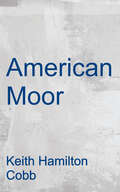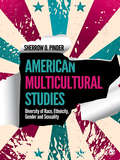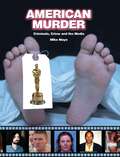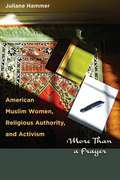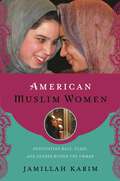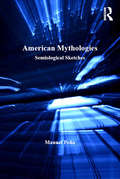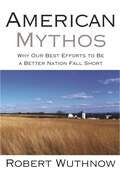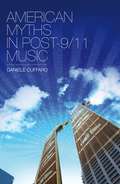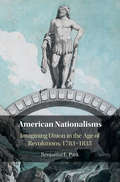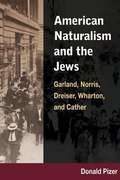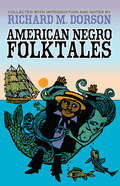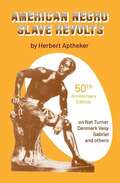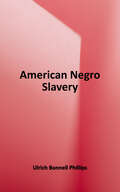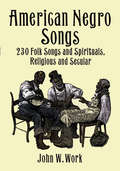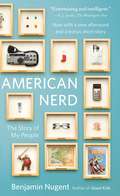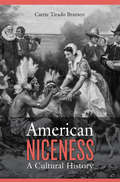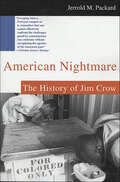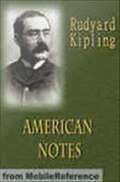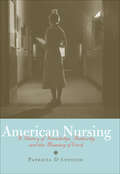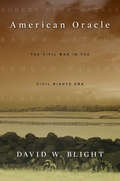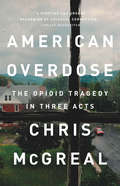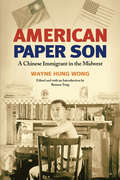- Table View
- List View
American Missionaries in Iran during the 1960s and 1970s
by Philip O. HopkinsThis work explores the interaction of American Protestant missionaries with Iranians during the 1960s and 1970s. It focuses on the missionary activities of four American Protestant groups: Presbyterians, Assemblies of God, International Missions, and Southern Baptists. It argues that American missionaries’ predisposition toward their own culture confused their message of the gospel and added to the negative perception of Christianity among Iranians. This bias was seen primarily in the American missionaries’ desire to modernize Iran through education and healthcare, and between the missionaries’ relationship with Iranian Christians. Iranian attitudes towards missionary involvement in these areas are investigated, as is the changing American missionary strategy from a traditional method where missionaries had the final say on most matters related to American and Iranian Christian interaction, to the beginnings of an indigenous system where a partnership developed between the missionary and the Iranian Christian.
American Moor (Modern Plays Series)
by Keith Hamilton CobbKeith Hamilton Cobb embarks on a poetic exploration that examines the experience and perspective of black men in America through the metaphor of Shakespeare's character Othello, offering up a host of insights that are by turns introspective and indicting, difficult and deeply moving. American Moor is a play about race in America, but it is also a play about who gets to make art, who gets to play Shakespeare, about whose lives and perspectives matter, about actors and acting, and about the nature of unadulterated love.
American Multicultural Studies: Diversity of Race, Ethnicity, Gender and Sexuality
by Sherrow O. PinderAmerican Multicultural Studies: Diversity of Race, Ethnicity, Gender and Sexuality provides an interdisciplinary view of multicultural studies in the United States, addressing a wide range of topics that continue to define and shape this area of study. Through this collection of essays Sherrow Pinder responds to the need to open up a rich avenue for addressing current and continuing issues of race, gender, ethnicity, sexuality, cultural diversity, and education in their varied forms. Substantial thematic overlaps are found between sections and essays, all of which are oriented toward a single broad objective: to develop new and different ways of addressing how multicultural issues, in their discursive sociocultural contexts, are inextricably linked to the operations of power. Power, as a site of resistance to which it invariably gives rise, is tacked from a perspective that attends to the complexities of America's history and politics.
American Murder
by Mike MayoInvestigating the way Hollywood scoops up notorious criminals and turns them into legends, this entertaining who's-who guide provides thumbnail sketches of such killers as Ma Barker, Black Beard, Al Capone, John Wesley Hardin, and Charles Starkweather. Noting that some figures are glamorized in popular culture (Jesse James), while others are demonized (Charles Manson), this encyclopedic collection explores the legends' emotional truths as depicted in movies, stories, and songs. Facts of the real cases behind these notorious criminals are also presented, including the landmark rulings that pioneered new approaches to criminal justice.
American Murder: Three True Crime Classics
by Darcy O'BrienThree riveting accounts of horrific crimes and the twisted minds behind them by an Edgar Award–winning author, in one volume. A father&’s ultimate betrayal, a savage killing spree that terrorized Los Angeles, and the brutal slaying of a rich man&’s college-aged daughter. In this heart-stopping true crime collection, New York Times–bestselling author Darcy O&’Brien uncovers the dark underside of the American dream. Murder in Little Egypt: Dr. John Dale Cavaness selflessly attended to the needs of his small, southern Illinois community. But when Cavaness was charged with the murder of his son Sean in December 1984, a radically different portrait of the physician and surgeon emerged. Throughout the three decades he had basked in the admiration and respect of the people of Little Egypt, Cavaness was privately terrorizing his family, abusing his employees, and making disastrous financial investments. In this New York Times bestseller, as more and more grisly details come to light, so too does rural America&’s heritage of blood and violence become clear. The Hillside Stranglers: For weeks, the body count of sexually violated, brutally murdered young women escalated. With increasing alarm, Los Angeles newspapers headlined the deeds of a serial killer they named the Hillside Strangler. But not until January 1979, more than a year later, would the mysterious disappearance of two university students near Seattle lead police to the arrest of a security guard—the handsome, charming, fast-talking Kenny Bianchi—and the discovery that the strangler was not one man but two. The Hillside Stranglers is the disturbing portrait of a city held hostage by fear and a pair of psychopaths whose lust was as insatiable as their hate. A Dark and Bloody Ground: On a sweltering evening in August 1985, three men breached Roscoe Acker&’s alarm and security systems, stabbed his daughter to death, and made off with over $1.9 million in cash. The killers were part of a hillbilly gang led by Sherry Sheets Hodge, a former prison guard, and her husband, lifetime criminal Benny Hodge. The stolen money came in handy shortly afterward, when they used it to lure Kentucky&’s most flamboyant lawyer, Lester Burns, into representing them. &“The smell of wet, coal-laden earth, white lightning, and cocaine-driven sweat rises from these marvelously atmospheric—and compelling—pages&” (Kirkus Reviews).
American Muslim Women, Religious Authority, and Activism: More Than a Prayer
by Juliane HammerFollowing the events of September 11, 2001, American Muslims found themselves under unprecedented scrutiny. Muslim communities in the United States suffered from negative representations of their religion, but they also experienced increased interest in aspects of their faith and cultures. They seized the opportunity to shape the intellectual contribution of American Muslims to contemporary Muslim thought as never before. Muslim women in particular-often assumed to be silenced, oppressed members of their own communities-challenged stereotypes through their writing, seeking to express what it means to be a Muslim woman in America and carrying out intra-Muslim debates about gender roles and women's participation in society. Hammer looks at the work of significant female American Muslim writers, scholars, and activists, using their writings as a lens for a larger discussion of Muslim intellectual production in America and beyond. Centered on the controversial women-led Friday prayer in March 2005, Hammer uses this event and its aftermath to address themes of faith, community, and public opinion. Tracing the writings of American Muslim women since 1990, the author covers an extensive list of authors, including Amina Wadud, Leila Ahmed, Asma Barlas, Riffat Hassan, Mohja Kahf, Azizah al-Hibri, Asra Normani, and Asma Gull Hasan. Hammer deftly examines each author's writings, demonstrating that the debates that concern American Muslim women are at the heart of modern Muslim debates worldwide. While gender is the catalyst for Hammer's study, her examination of these women's intellectual output touches on themes central to contemporary Islam: authority, tradition, Islamic law, justice, and authenticity.
American Muslim Women: Negotiating Race, Class, and Gender within the Ummah (Religion, Race, and Ethnicity)
by Jamillah KarimAfrican American Muslims and South Asian Muslim immigrants are two of the largest ethnic Muslim groups in the U.S. Yet there are few sites in which African Americans and South Asian immigrants come together, and South Asians are often held up as a “model minority” against African Americans. However, the American ummah, or American Muslim community, stands as a unique site for interethnic solidarity in a time of increased tensions between native-born Americans and immigrants.This ethnographic study of African American and South Asian immigrant Muslims in Chicago and Atlanta explores how Islamic ideals of racial harmony and equality create hopeful possibilities in an American society that remains challenged by race and class inequalities. The volume focuses on women who, due to gender inequalities, are sometimes more likely to move outside of their ethnic Muslim spaces and interact with other Muslim ethnic groups in search of gender justice.American Muslim Women explores the relationships and sometimes alliances between African Americans and South Asian immigrants, drawing on interviews with a diverse group of women from these two communities. Karim investigates what it means to negotiate religious sisterhood against America's race and class hierarchies, and how those in the American Muslim community both construct and cross ethnic boundaries.American Muslim Women reveals the ways in which multiple forms of identity frame the American Muslim experience, in some moments reinforcing ethnic boundaries, and at other times, resisting them.
American Mythologies: Semiological Sketches
by Manuel PeñaAmerican Mythologies examines eleven myths that form part of the storehouse of present-day American mythologies, elucidating the nature of contemporary myths by investigating their ideological sub-terrain. Grounded in a semiological approach, which explores the displacement of information and the transformation of signs that characterise mythic communication, this book sheds light on the socio-economic, gendered, national and racial interests that lie behind myth-making. Presenting rich case studies from popular culture and public discourse, it demonstrates the manner in which these myths, and American mythology in general, promote the core values of everyday life under capitalism: rugged individualism, the unfettered right to accumulate wealth, the superior moral character of free-enterprise democracy, and its abundant opportunities for every citizen. By the same token, that same mythology negates the corruption endemic to the capitalist social order, an order that also promotes inescapable class, racial, and gender inequalities which confine the majority of Americans to a life of constant economic struggle. A fresh critique of the foundations of American culture, American Mythologies will appeal to those with interests in sociology, social and cultural theory, and cultural and media studies.
American Mythos: Why Our Best Efforts to Be a Better Nation Fall Short
by Robert WuthnowAmerica was built on stories: tales of grateful immigrants arriving at Ellis Island, Horatio Alger-style transformations, self-made men, and the Protestant work ethic. In this new book, renowned sociologist Robert Wuthnow examines these most American of stories--narratives about individualism, immigration, success, religion, and ethnicity--through the eyes of recent immigrants. In doing so, he demonstrates how the "American mythos" has both legitimized American society and prevented it from fully realizing its ideals. This magisterial work is a reflection and meditation on the national consciousness. It details how Americans have traditionally relied on narratives to address what it means to be strong, morally responsible individuals and to explain why some people are more successful than others--in short, to help us make sense of our lives. But it argues that these narratives have done little to help us confront new challenges. We pass laws to end racial discrimination, yet lack the resolve to create a more equitable society. We welcome the idea of pluralism in religion and values, yet we are shaken by the difficulties immigration presents. We champion prosperity for all, but live in a country where families are still homeless. American Mythos aptly documents this disconnect between the stories we tell and the reality we face. Examining how cultural narratives may not, and often do not, reflect the reality of today's society, it challenges readers to become more reflective about what it means to live up to the American ideal.
American Myths in Post-9/11 Music
by Daniele CuffaroAfter September 11, 2001, the void left following the attack on the Twin Towers in the heart of New York was the visible symbol that there was to be a breaking point with the past. The attacks dramatically changed the everyday lives of the American people and the new devastating landscape led people to seek to restore the certainties that had been so suddenly shattered. In doing this, Americans went back to the historical myths in their culture. This book explores the collective memory and historical American myths like, for example, the myth of the innocent nation and the frontier myth, and shows how some of these nationally considered historical truths have not disappeared, but were indeed exhumed in the music produced post-9/11.
American Narratives: Multiethnic Writing in the Age of Realism
by Margaret Crumpton WinterAmerican Narratives takes readers back to the turn of the twentieth century to reintroduce four writers of varying ethnic backgrounds whose works were mostly ignored by critics of their day. With the skill of a literary detective, Molly Crumpton Winter recovers an early multicultural discourse on assimilation and national belonging that has been largely overlooked by literary scholars. At the heart of the book are close readings of works by four nearly forgotten artists from 1890 to 1915, the era often termed the age of realism: Mary Antin, a Jewish American immigrant from Russia; Zitkala- a, a Sioux woman originally from South Dakota; Sutton E. Griggs, an African American from the South; and Sui Sin Far, a biracial, Chinese American female writer who lived on the West Coast. Winter's treatment of Antin's The Promised Land serves as an occasion for a reexamination of the concept of assimilation in American literature, and the chapter on Zitkala- a is the most comprehensive analysis of her narratives to date. Winter argues persuasively that Griggs should have long been a more visible presence in American literary history, and the exploration of Sui Sin Far reveals her to be the embodiment of the varied and unpredictable ways that diversity of cultures came together in America.In American Narratives, Winter maintains that the writings of these four rediscovered authors, with their emphasis on issues of ethnicity, identity, and nationality, fit squarely in the American realist tradition. She also establishes a multiethnic dialogue among these writers, demonstrating ways in which cultural identity and national belonging are peristently contested in this literature.
American Nationalisms
by Benjamin E. ParkAmerica was born in an age of political revolution throughout the Atlantic world, a period when the very definition of 'nation' was transforming. Benjamin E. Park traces how Americans imagined novel forms of nationality during the country's first five decades within the context of European discussions taking place at the same time. Focusing on three case studies - Massachusetts, Pennsylvania, and South Carolina - Park examines the developing practices of nationalism in three specific contexts. He argues for a more elastic connection between nationalism and the nation-state by demonstrating that ideas concerning political and cultural allegiance to a federal body developed in different ways and at different rates throughout the nation. American Nationalisms explores how ideas of nationality permeated political disputes, religious revivals, patriotic festivals, slavery debates, and even literature.
American Naturalism and the Jews: Garland, Norris, Dreiser, Wharton, and Cather
by Donald PizerAmerican Naturalism and the Jews examines the unabashed anti-Semitism of five notable American naturalist novelists otherwise known for their progressive social values. Hamlin Garland, Frank Norris, and Theodore Dreiser all pushed for social improvements for the poor and oppressed, while Edith Wharton and Willa Cather both advanced the public status of women. But they all also expressed strong prejudices against the Jewish race and faith throughout their fiction, essays, letters, and other writings, producing a contradiction in American literary history that has stymied scholars and, until now, gone largely unexamined. In this breakthrough study, Donald Pizer confronts this disconcerting strain of anti-Semitism pervading American letters and culture, illustrating how easily prejudice can coexist with even the most progressive ideals. Pizer shows how these writers' racist impulses represented more than just personal biases, but resonated with larger social and ideological movements within American culture. Anti-Semitic sentiment motivated such various movements as the western farmers' populist revolt and the East Coast patricians' revulsion against immigration, both of which Pizer discusses here. This antagonism toward Jews and other non-Anglo-Saxon ethnicities intersected not only with these authors' social reform agendas but also with their literary method of representing the overpowering forces of heredity, social or natural environment, and savage instinct.
American Negro Folktales
by Richard M. DorsonA preacher battles a bear, a mother returns from the dead, and a clever servant conducts a Big Feet Contest in this rich anthology of African-American folklore. Scores of humorous and harrowing stories, collected during the mid-twentieth century, tell of talking animals, ghosts, devils, and saints.The first part of the book provides a setting for the fables, in which folklorist Richard M. Dorson discusses their origins and the artistry of storytellers. The second part consists of the tales, which include the adventures of Old Marster and John, supernatural episodes, and comical and satirical anecdotes as well as more realistic accounts of racial injustice. Recounted in the actual words of the narrators, the folktales abound in bold language, memorable imagery, and bittersweet humor that reflect the essence of African-American storytelling traditions.
American Negro Slave Revolts
by Herbert ApthekerYears ago, the controlling view held that the response of the slaves in the United States to their bondage "was one of passivity and docility". That opinion, so decisive a part of the chauvinism afflicting the nation, is shown to be false in this book and in the material accumulated since its initial appearance has further substantiated this thesis; namely, that the African-American people, in slavery, forged a record of discontent and of resistance comparable to that marking the history of any other oppressed people.
American Negro Slavery: A Survey of the Supply, Employment, and Control of Negro Labor as Determined by the Plantation Regime
by Ulrich Bonnell PhillipsOriginally published in 1918, Ulrich Bonnell Phillips?s American Negro Slavery was widely hailed upon publication as the most comprehensive and accurate examination of enslaved Africans in the South by an academic historian. In the 1950s, however, a new generation of historians?led by Kenneth Stamp?challenged many of Phillips?s inaccurate and racist views about slavery. While many historians today acknowledge that American Negro Slavery is a pioneering work, most agree that Phillips?s misunderstandings, misinterpretations, and overt racism profoundly diminish his conclusions. This 1966 edition includes a foreword by Eugene D. Genovese, author of numerous academic works on slavery, including the Bancroft Prize-winning Roll, Jordan, Roll: The World the Slaves Made (1974).
American Negro Songs: 230 Folk Songs and Spirituals, Religious and Secular
by John W. WorkFrom joyous gospel to deeply felt blues, this wonderful collection contains vintage songs sung and played through the years by black Americans — at work, in church, and for pure entertainment. Included are spirituals, blues, work songs, and a variety of social and dance songs.This important volume was originally compiled in 1940 by Dr. John W. Work, the noted musicologist affiliated with Fisk University and the celebrated Fisk Jubilee Singers. In it, he discusses the origins and history of black American folk music, the influence of slavery and African cultures, and the lyric significance of such much-loved songs as "Swing Low, Sweet Chariot," Steal Away to Jesus," "Lord, I Want to Be a Christian," and "John Henry." These informative notes lead up to the heart of the book: the complete words and music for 230 religious and secular songs, including "Study War No More," "Keep Me from Sinking Down," "You May Bury Me in the East," "Rock of Ages," "Go Tell It on the Mountain," and many others.This is an indispensable treasury of music for singers, musicians and all readers seeking a comprehensive sourcebook of black American folk music. It will be equally welcomed at parties, family get-togethers, sing-alongs, church events, and other gatherings where people want to play and sing these classic folk songs that are an integral part of American musical history.
American Nerd: The Story of My People
by Benjamin NugentMost people know a nerd when they see one but can't define just what a nerd is. American Nerd: The Story of My People gives us the history of the concept of nerdiness and of the subcultures we consider nerdy. What makes Dr. Frankenstein the archetypal nerd? Where did the modern jock come from? When and how did being a self-described nerd become trendy? As the nerd emerged, vaguely formed, in the nineteenth century, and popped up again and again in college humor journals and sketch comedy, our culture obsessed over the designation. Mixing research and reportage with autobiography, critically acclaimed writer Benjamin Nugent embarks on a fact-finding mission of the most entertaining variety. He seeks the best definition of nerd and illuminates the common ground between nerd subcultures that might seem unrelated: high-school debate team kids and ham radio enthusiasts, medieval reenactors and pro-circuit Halo players. Why do the same people who like to work with computers also enjoy playing Dungeons & Dragons? How are those activities similar? This clever, enlightening book will appeal to the nerd (and antinerd) that lives inside all of us.
American Niceness: A Cultural History
by Carrie Tirado BramenThe cliché of the Ugly American—loud, vulgar, materialistic, chauvinistic—still expresses what people around the world dislike about their Yankee counterparts. Carrie Tirado Bramen recovers the history of a different national archetype—the nice American—which has been central to ideas of American identity since the nineteenth century.
American Nightmare: The History of Jim Crow
by Jerrold M. Packard“A very powerful and unsettling story of our nation’s century-long ‘pogrom’ by vengeful white Southerners against their black neighbors.” —The Washington TimesFor a hundred years after the end of the Civil War, a quarter of all Americans lived under a system of legalized segregation called Jim Crow. Together with its rigidly enforced canon of racial “etiquette,” these rules governed nearly every aspect of life—and outlined draconian punishments for infractions.The purpose of Jim Crow was to keep African Americans subjugated at a level as close as possible to their former slave status. Exceeding even South Africa’s notorious apartheid in the humiliation, degradation, and suffering it brought, Jim Crow left scars on the American psyche that are still felt today. American Nightmare examines and explains Jim Crow from its beginnings to its end: how it came into being, how it was lived, how it was justified, and how, at long last, it was overcome only a few short decades ago. Most importantly, this book reveals how a nation founded on principles of equality and freedom came to enact as law a pervasive system of inequality and virtual slavery.Although America has finally consigned Jim Crow to the historical graveyard, Jerrold Packard shows why it is important that this scourge—and an understanding of how it happened—remain alive in the nation’s collective memory.“Sweeping history . . . Packard compels us to remember that one cannot effectively confront the challenges posed by contemporary race relations without recognizing the agonies of the American past.” —The Christian Science Monitor
American Notes
by Rudyard KiplingThis is what Bret Harte has written of the great city of San Francisco, and for the past fortnight I have been wondering what made him do it. There is neither serenity nor indifference to be found in these parts; and evil would it be for the continents whose wardship were intrusted to so reckless a guardian. Behold me pitched neck-and-crop from twenty days of the high seas into the whirl of California, deprived of any guidance, and left to draw my own conclusions. <P> <P> Protect me from the wrath of an outraged community if these letters be ever read by American eyes San Francisco is a mad city--inhabited for the most part by perfectly insane people, whose women are of a remarkable beauty. .
American Nursing: A History of Knowledge, Authority, and the Meaning of Work
by Patricia D'AntonioFirst Place, History and Public Policy, 2010 American Journal of Nursing Book of the Year AwardsThis new interpretation of the history of nursing in the United States captures the many ways women reframed the most traditional of all gender expectations—that of caring for the sick—to create new possibilities for themselves, to renegotiate the terms of some of their life experiences, and to reshape their own sense of worth and power. For much of modern U.S. history, nursing was informal, often uncompensated, and almost wholly the province of female family and community members. This began to change at the end of the nineteenth century when the prospect of formal training opened for women doors that had been previously closed. Nurses became respected professionals, and becoming a formally trained nurse granted women a range of new social choices and opportunities that eventually translated into economic mobility and stability. Patricia D'Antonio looks closely at this history—using a new analytic framework and a rich trove of archival sources—and finds complex, multiple meanings in the individual choices of women who elected a nursing career. New relationships and social and professional options empowered nurses in constructing consequential lives, supporting their families, and participating both in their communities and in the health care system. Narrating the experiences of nurses, D'Antonio captures the possibilities, power, and problems inherent in the different ways women defined their work and lived their lives. Scholars in the history of medicine, nursing, and public policy, those interested in the intersections of identity, work, gender, education, and race, and nurses will find this a provocative book.
American Oracle: The Civil War in the Civil Rights Era
by David W. Blight“The ghosts of the Civil War never leave us, as David Blight knows perhaps better than anyone, and in this superb book he masterfully unites two distant but inextricably bound events.”―Ken Burns Standing on the steps of the Lincoln Memorial on August 28, 1963, a century after the signing of the Emancipation Proclamation, Martin Luther King, Jr., declared, “One hundred years later, the Negro still is not free.” He delivered this speech just three years after the Virginia Civil War Commission published a guide proclaiming that “the Centennial is no time for finding fault or placing blame or fighting the issues all over again.” David Blight takes his readers back to the centennial celebration to determine how Americans then made sense of the suffering, loss, and liberation that had wracked the United States a century earlier. Amid cold war politics and civil rights protest, four of America’s most incisive writers explored the gulf between remembrance and reality. Robert Penn Warren, the southern-reared poet-novelist who recanted his support of segregation; Bruce Catton, the journalist and U.S. Navy officer who became a popular Civil War historian; Edmund Wilson, the century’s preeminent literary critic; and James Baldwin, the searing African-American essayist and activist—each exposed America’s triumphalist memory of the war. And each, in his own way, demanded a reckoning with the tragic consequences it spawned. Blight illuminates not only mid-twentieth-century America’s sense of itself but also the dynamic, ever-changing nature of Civil War memory. On the eve of the 150th anniversary of the war, we have an invaluable perspective on how this conflict continues to shape the country’s political debates, national identity, and sense of purpose.
American Overdose: The Opioid Tragedy in Three Acts
by Chris McGrealA comprehensive portrait of a uniquely American epidemic--devastating in its findings and damning in its conclusionsThe opioid epidemic has been described as "one of the greatest mistakes of modern medicine." But calling it a mistake is a generous rewriting of the history of greed, corruption, and indifference that pushed the US into consuming more than 80 percent of the world's opioid painkillers.Journeying through lives and communities wrecked by the epidemic, Chris McGreal reveals not only how Big Pharma hooked Americans on powerfully addictive drugs, but the corrupting of medicine and public institutions that let the opioid makers get away with it.The starting point for McGreal's deeply reported investigation is the miners promised that opioid painkillers would restore their wrecked bodies, but who became targets of "drug dealers in white coats."A few heroic physicians warned of impending disaster. But American Overdose exposes the powerful forces they were up against, including the pharmaceutical industry's coopting of the Food and Drug Administration and Congress in the drive to push painkillers--resulting in the resurgence of heroin cartels in the American heartland. McGreal tells the story, in terms both broad and intimate, of people hit by a catastrophe they never saw coming. Years in the making, its ruinous consequences will stretch years into the future.
American Paper Son: A Chinese Immigrant in the Midwest (Asian American Experience)
by Wayne Hung WongIn the early and mid-twentieth century, Chinese migrants evaded draconian anti-immigrant laws by entering the US under false papers that identified them as the sons of people who had returned to China to marry. Wayne Hung Wong tells the story of his life after emigrating to Wichita, Kansas, as a thirteen-year-old paper son. After working in his father’s restaurant as a teen, Wong served in an all-Chinese Air Force unit stationed in China during World War II. His account traces the impact of race and segregation on his service experience and follows his postwar life from finding a wife in Taishan through his involvement in the government’s amnesty program for Chinese immigrants and career in real estate. Throughout, Wong describes the realities of life as part of a small Chinese American community in a midwestern town. Vivid and rich with poignant insights, American Paper Son explores twentieth-century Asian American history through one person’s experiences.

